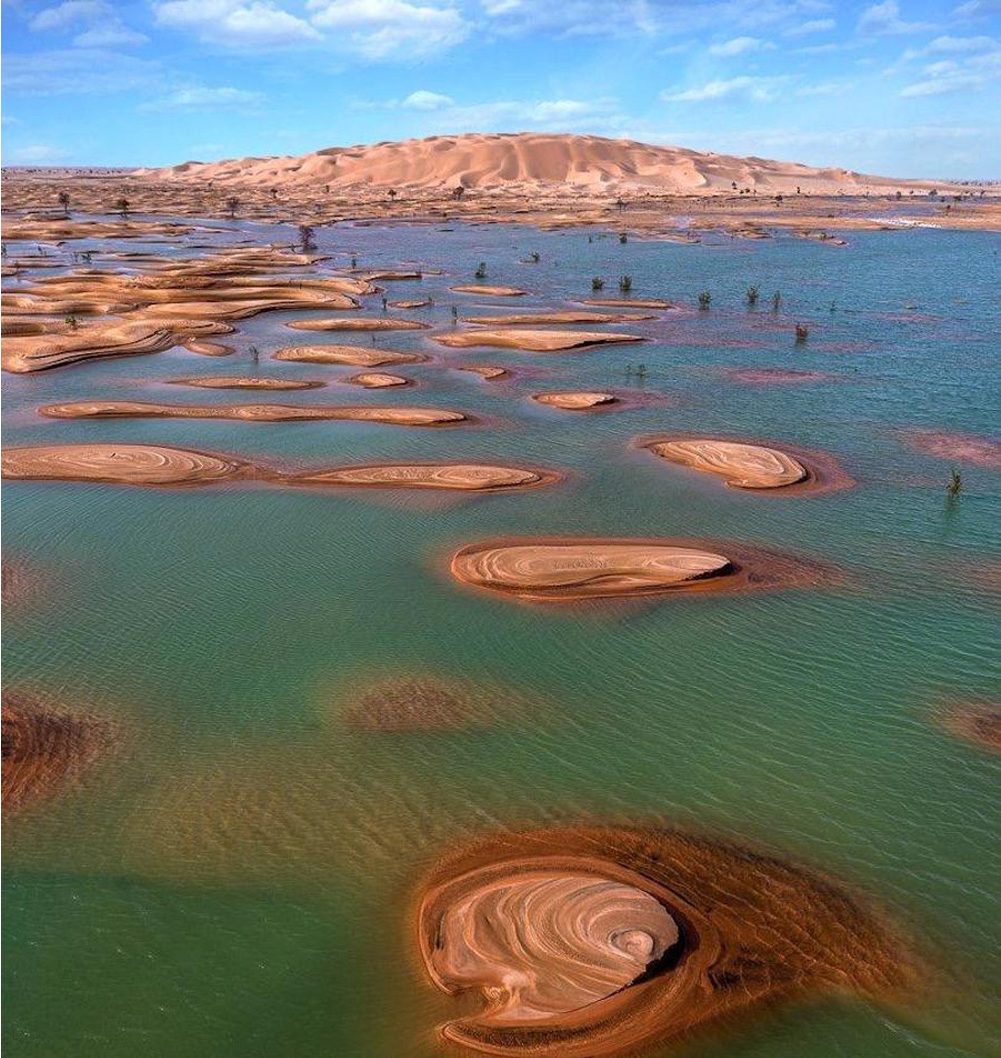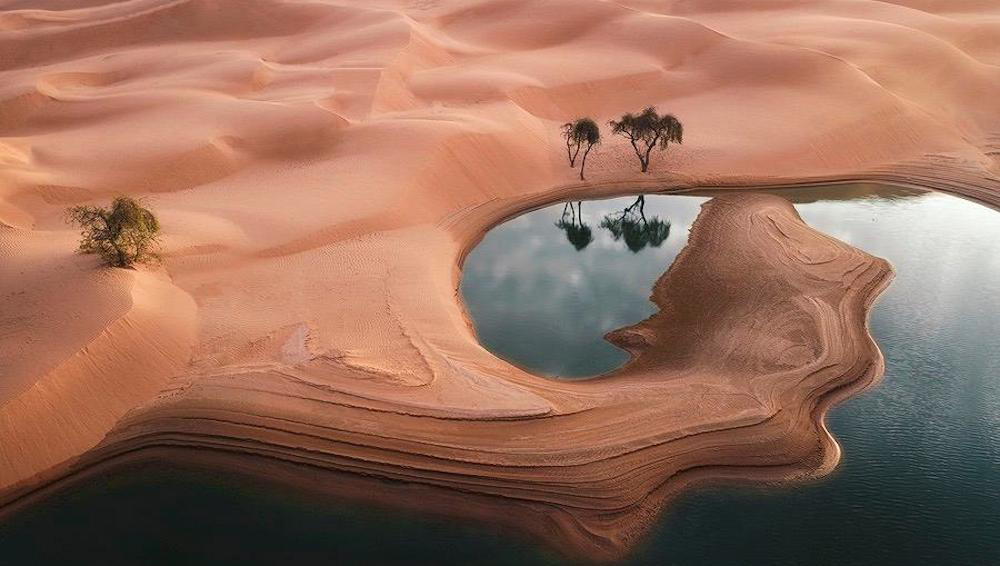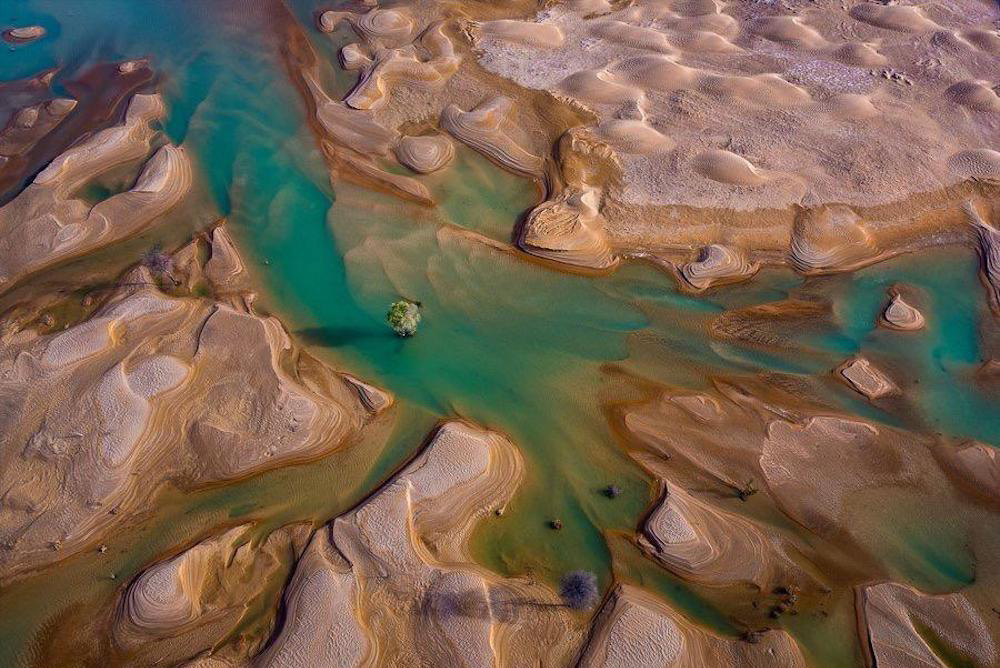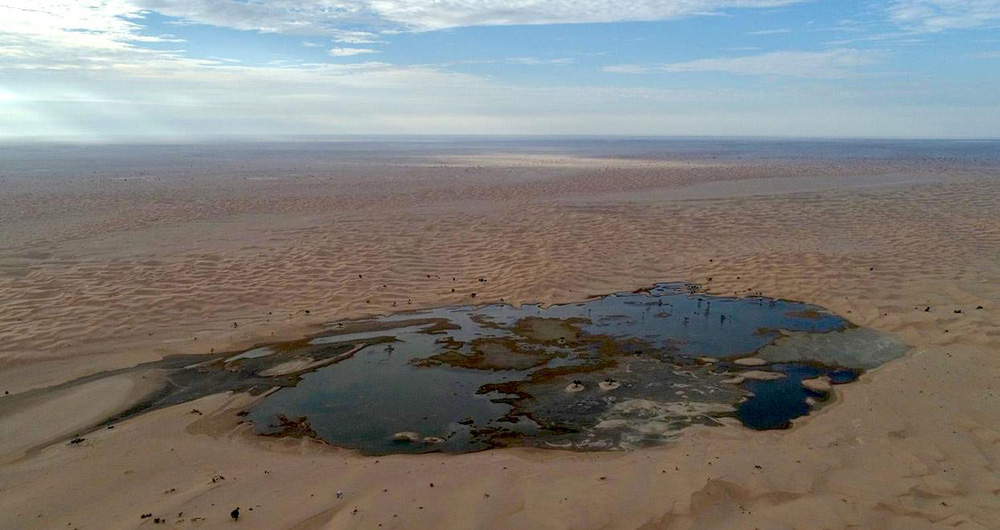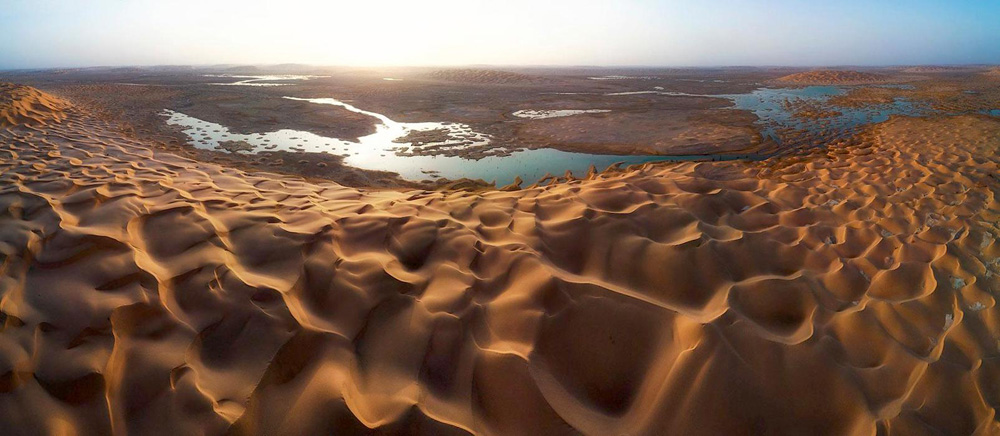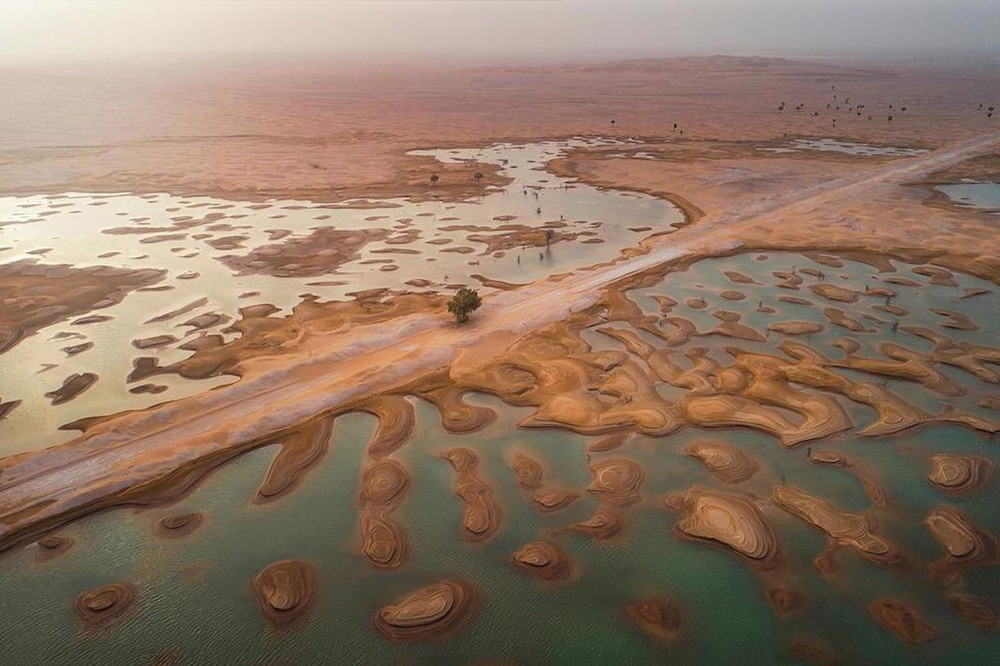
Deserts are not lifeless landscapes where nothing ever grows or changes. Deserts are in fact incredibly dynamic landscapes with their own rules of nature. They also provide the perfect habitat for flora and fauna that had adapted to their harsh surroundings.
The Empty Quarter (Rub’ al-Khali) is the largest continuous sand desert in the world. It spreads all the way across areas in Saudi Arabia, Oman, the UAE, and Yemen, with Saudi Arabia occupying the largest area. The Empty Quarter is, for example, one of the world’s most important camel pastures, because when it rains, camels can feed on the vegetation that grows in certain areas.
Wildlife photographer Haytham al-Shanfri and fellow professional photographers Abdulhakim Al-Jaili and Ahmed Altoqi have travelled to the vast landscapes of The Empty Quarter to capture a rare and breathtaking natural phenomenon of beautiful lakes forming in the desert of Oman.
In an interview with Al Arabiya English, al-Shanfri said that the aim of their trip was documentation. He noted noting that the group normally does this trip in the wintertime but this year they travelled earlier so they could take photographs of the lakes right after the rainfall.
Shanfri further explained that these lakes formed from the valleys from the Dhofar Governorate and crossed more than 450 kilometers towards the sands of the Empty Quarter. Some geologists believe that this area used to be a freshwater lake thousands of years ago and that the traces of these fresh lakes still exist.
Check out the majesty of this stark duality:
